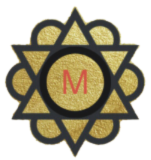
Tarot is a powerful tool that has been utilized for centuries, not only for divination but also for self-reflection and personal growth. At its core, tarot consists of a deck of 78 cards, divided into the Major Arcana and Minor Arcana. The Major Arcana, comprising 22 cards, represents significant life themes and spiritual lessons, while the Minor Arcana, consisting of 56 cards, delves into the day-to-day experiences and challenges we face.
When engaging in shadow work, tarot serves as a mirror, reflecting the hidden aspects of our psyche that we often avoid or suppress. This process can be both enlightening and challenging, as it requires us to confront our fears, insecurities, and unresolved emotions. Shadow work, a term popularized by psychologist Carl Jung, involves exploring the darker aspects of our personality—the parts we may deem undesirable or shameful.
By using tarot as a tool for this exploration, individuals can gain insights into their subconscious mind. Each card drawn can symbolize different facets of the self, prompting introspection and dialogue with one’s inner world. For instance, drawing The Devil card may evoke feelings of temptation or addiction, encouraging the individual to examine their relationship with these issues.
This process not only fosters self-awareness but also promotes healing by allowing individuals to acknowledge and integrate these shadow aspects into their conscious identity.
Key Takeaways
- Tarot can be a powerful tool for shadow work, helping us to explore and understand our subconscious patterns and beliefs.
- When choosing a tarot deck for shadow work, it’s important to find one that resonates with you and reflects the themes you want to explore.
- Setting a clear intention for your tarot reading is crucial for guiding the focus of your shadow work and gaining meaningful insights.
- Tarot card interpretation can provide valuable insights into our shadow self, helping us to uncover and address hidden aspects of our psyche.
- Integrating tarot insights into our healing process involves reflecting on the messages received and taking actionable steps towards personal growth and transformation.
- Seeking support and guidance from a trusted tarot reader or therapist can provide valuable assistance for deeper shadow work and navigating challenging emotions.
Choosing the Right Tarot Deck for Your Healing Journey
Selecting a tarot deck that resonates with you is a crucial step in your shadow work journey. With countless decks available, each with its unique artwork and symbolism, finding one that speaks to your intuition can enhance your experience significantly. Some individuals may prefer traditional decks like the Rider-Waite-Smith, known for its rich imagery and straightforward symbolism, while others might be drawn to more contemporary or themed decks that align with their personal aesthetics or spiritual beliefs.
For example, the Wild Unknown Tarot features minimalist illustrations that evoke a sense of nature and introspection, making it appealing for those seeking a more organic connection to their readings. When choosing a deck, consider how the imagery makes you feel. Does it evoke curiosity or discomfort?
Does it inspire you to delve deeper into your emotions? The right deck should resonate on a personal level, allowing you to connect with the cards intuitively. Additionally, some decks come with guidebooks that provide insights into the meanings of each card, which can be particularly helpful for beginners.
However, as you progress in your shadow work journey, you may find that your interpretations evolve beyond traditional meanings, allowing for a more personalized understanding of the cards in relation to your experiences.
Setting the Intention for Your Shadow Work Tarot Reading

Before embarking on a tarot reading focused on shadow work, it is essential to set a clear intention. This intention acts as a guiding light throughout the reading process, helping to focus your energy and thoughts on specific areas of your life that require exploration. To establish this intention, take some time to reflect on what aspects of your shadow self you wish to confront.
Are there recurring patterns in your relationships that you want to understand better? Or perhaps there are fears or insecurities that have been holding you back from achieving your goals? By articulating these intentions, you create a framework for your reading.
Once you have identified your intention, consider writing it down or verbalizing it aloud before shuffling the cards. This act of declaration reinforces your commitment to the process and signals to your subconscious mind that you are ready to engage with your shadow self.
” This focused approach not only enhances the depth of your reading but also cultivates a sense of accountability as you navigate through the insights gained from the cards.
Exploring Your Shadow Self Through Tarot Card Interpretation
The interpretation of tarot cards during shadow work is a deeply personal and subjective experience. Each card drawn can evoke different emotions and insights depending on the context of your question and your current life circumstances. For example, drawing The Moon card may illuminate feelings of confusion or fear related to the unknown aspects of yourself.
This card often symbolizes illusions and hidden truths, prompting you to confront what lies beneath the surface of your consciousness. Engaging with this card may lead you to explore repressed memories or emotions that have been influencing your behavior without your awareness. As you interpret each card in relation to your shadow work intentions, allow yourself to embrace any discomfort that arises.
The process may bring forth feelings of vulnerability or resistance; however, these emotions are often indicators of areas that require healing. Consider journaling about your interpretations after each reading. This practice not only solidifies your insights but also provides a tangible record of your journey through shadow work.
Over time, patterns may emerge in your readings that reveal deeper truths about yourself and guide you toward healing and integration.
Integrating Tarot Insights into Your Healing Process
Integrating the insights gained from tarot readings into your daily life is essential for effective shadow work. After each reading, take time to reflect on how the messages from the cards can be applied practically. For instance, if a reading reveals a tendency toward self-sabotage represented by The Tower card, consider developing strategies to counteract these behaviors.
This might involve setting boundaries in relationships or practicing self-compassion when faced with setbacks. By actively engaging with the insights from your readings, you create opportunities for growth and transformation. Incorporating rituals or practices that resonate with the themes uncovered in your readings can also enhance integration.
For example, if The Empress card appears frequently in your readings, symbolizing nurturing and creativity, you might explore creative outlets such as painting or writing as a means of expressing yourself. Alternatively, if The Hermit card suggests a need for introspection and solitude, consider carving out time for meditation or quiet reflection in nature. These practices not only reinforce the lessons learned from tarot but also foster a deeper connection with your inner self.
Seeking Support and Guidance for Deeper Shadow Work with Tarot

Seeking Guidance and Community
While tarot can be an incredibly powerful tool for self-exploration and healing, navigating the complexities of shadow work can sometimes feel overwhelming. Seeking support from others—whether through workshops, online communities, or one-on-one sessions with experienced tarot readers—can provide valuable guidance as you delve deeper into your shadow self. Engaging with others who share similar interests can foster a sense of community and validation as you explore challenging emotions and experiences.
A trained professional can help you navigate difficult emotions that arise during shadow work while providing tools and techniques to manage them effectively. This collaborative approach allows for a more comprehensive understanding of how tarot insights intersect with psychological principles, ultimately enhancing your healing process.
Embracing Your Shadow Self with Courage and Compassion
Whether through group sessions or individual therapy, seeking support can empower you to embrace your shadow self with compassion and courage as you continue on your path toward self-discovery and healing.
If you are interested in exploring the deeper meanings of tarot cards, you may also enjoy reading about The Meaning of The Lovers Tarot Card in Love Readings. This article delves into the symbolism and interpretations of this powerful card in the context of relationships and love. Understanding the nuances of each card can enhance your tarot practice and help you uncover hidden truths about yourself and your relationships.
FAQs
What is shadow work?
Shadow work is a psychological and spiritual practice that involves exploring and integrating the hidden or repressed aspects of oneself. It often involves delving into the subconscious mind to uncover and work through unresolved issues, traumas, and negative patterns.
What is tarot?
Tarot is a form of divination that uses a deck of cards to gain insight, guidance, and self-reflection. Each card in the deck represents different archetypes, symbols, and themes that can be interpreted in various ways.
How can tarot be used for shadow work?
Tarot can be used for shadow work by providing a visual and symbolic tool for exploring the subconscious mind. The cards can help individuals uncover hidden emotions, fears, and patterns, and offer guidance on how to work through them.
How can tarot be used for healing?
Tarot can be used for healing by providing a means for self-reflection, insight, and guidance. The cards can help individuals gain clarity, understanding, and perspective on their emotional and mental well-being, and offer suggestions for personal growth and healing.
Is tarot a form of therapy?
Tarot is not a replacement for professional therapy, but it can be used as a complementary tool for self-exploration and personal development. It is important to seek professional help when dealing with serious mental health issues.






